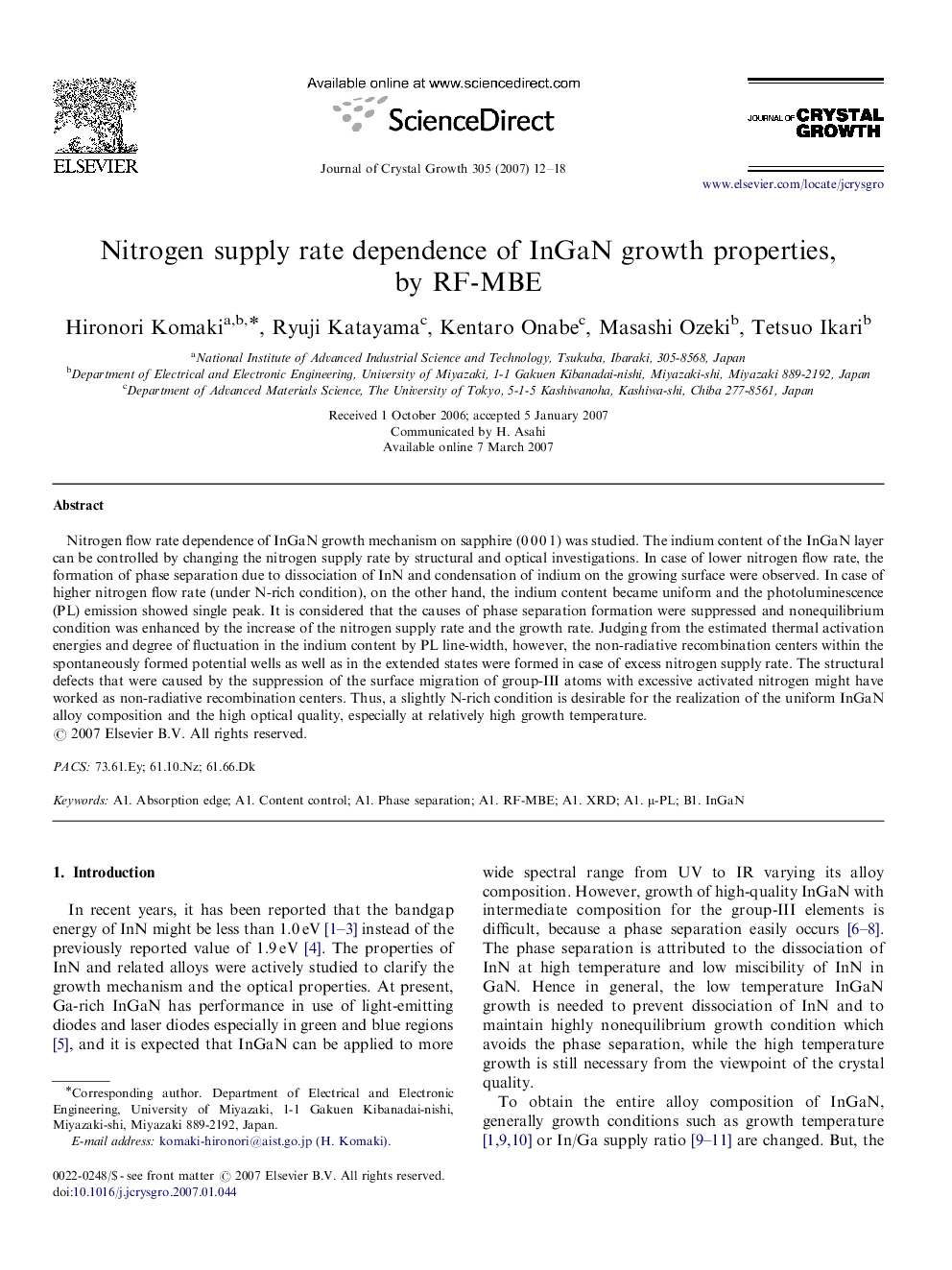| Article ID | Journal | Published Year | Pages | File Type |
|---|---|---|---|---|
| 1795376 | Journal of Crystal Growth | 2007 | 7 Pages |
Nitrogen flow rate dependence of InGaN growth mechanism on sapphire (0 0 0 1) was studied. The indium content of the InGaN layer can be controlled by changing the nitrogen supply rate by structural and optical investigations. In case of lower nitrogen flow rate, the formation of phase separation due to dissociation of InN and condensation of indium on the growing surface were observed. In case of higher nitrogen flow rate (under N-rich condition), on the other hand, the indium content became uniform and the photoluminescence (PL) emission showed single peak. It is considered that the causes of phase separation formation were suppressed and nonequilibrium condition was enhanced by the increase of the nitrogen supply rate and the growth rate. Judging from the estimated thermal activation energies and degree of fluctuation in the indium content by PL line-width, however, the non-radiative recombination centers within the spontaneously formed potential wells as well as in the extended states were formed in case of excess nitrogen supply rate. The structural defects that were caused by the suppression of the surface migration of group-III atoms with excessive activated nitrogen might have worked as non-radiative recombination centers. Thus, a slightly N-rich condition is desirable for the realization of the uniform InGaN alloy composition and the high optical quality, especially at relatively high growth temperature.
